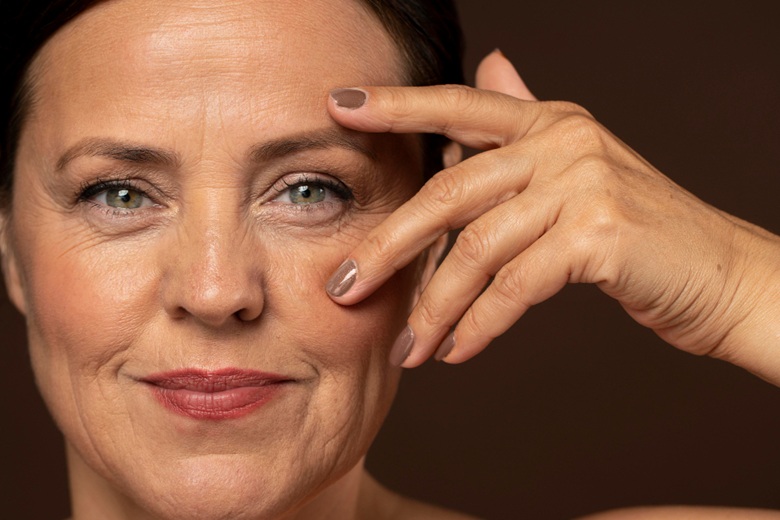Copyright quintdaily

Did you know that simple habits can turn your existing age spots varying shades of darkness in as little as weeks? Age spots are the product of melanocytes producing too much melanin in the same area, forming brown patches that usually range from 5mm to 15mm in diameter. Age spots are patches of hyperpigmentation formed from years of accumulating UV damage. Melanin pigments inside of cells do not distribute evenly through the epidermis or dermis due to some degree of clustering in the epidermal layer. Consulting a pigmentation doctor Singapore can offer an accurate diagnosis and management of your stubborn spots before they develop into troublesome areas that are more resistant to treatment. Solar lentigines is the medical language used to describe age spots. They occur distinctly from freckles, which can darken or disappear in the fall when the sun exposure decreases. If you have age spots, you likely develop them in sun-exposed areas after the age of 40. While cellular events are at work, chronic photodamage causes increased melanocyte activity and impaired melanin distribution. Keratinocytes visibly accumulate more melanin pigments in your age spots, making those affected areas appear brown. Age spots are generally stable once formed, contrasting with melasma, which changes with hormones. The brown color of age spots can darken if you have more sun exposure on identified areas. Consulting with your dermatologist and your history and description of pigmentation is critical for accurate differentiation of pigmentation types; for example, sometimes you will see other skin conditions like early melanomas and seborrheic keratoses that resemble age spots. Morning Skincare Mistakes That Accelerate Pigmentation Not using sunscreen during cloudy days puts your skin at risk of UV rays that can penetrate light cloud coverage and trigger melanocyte activation. UVA rays can also penetrate window glass which can make existing age spots darker and initiate new areas of hyperpigmentation. Low-level UV radiation emitted by fluorescent lighting in indoor spaces can also accumulate over time, especially for office workers who work near windows. Using expired sunscreen will significantly reduce the SPF protection of the sunscreen, as sunscreen’s active ingredients, such as avobenzone and octinoxate, degrade over time. When they break down, they act like filters that provide minimal UV filtration and a false sense of protection from UV rays. Applying sunscreen with less than the recommended amount also leaves coverage gaps where melanocytes may be further stimulated by UV rays. Most people apply less than required, particularly around the existing age spots. Physical exfoliants with sharp particles can create micro-tears in the skin that increase photosensitivity for 24-48 hours after exfoliation. Compromised skin barriers will allow UV rays to penetrate through and increase melanin production in healing tissue. Chemical exfoliants, such as glycolic acid, at high concentrations may also thin the stratum corneum, reducing our natural UV protection. Afternoon Sun Exposure Patterns The period of 10 am to 4 pm is when the sun’s rays are the strongest, and it is also when the peak UV hours are. The color of age spots is darker than that of the skin around them, and hence they absorb more heat and UV radiation, which in turn makes the darkening more progressive. Indirect radiation coming from reflective surfaces increases UV exposure – among the reflective materials are water, sand, and concrete which all reflect UV rays. This radiation that is reflected goes underneath the hats and umbrellas, reaching the age spots on the face from the bottom. Car windows are effective in blocking UVB rays but let through most of the UVA rays, and this is the reason why many people get age spots on the part of their face and hands that are on the side of the driver. Did You Know? Melanocytes, which are cells that are found in the age spots keep on producing melanin even when there is no sun, while the skin around them produces melanin only when there is UV stimulation. This is the reason why age spots do not get lightened during the winter when tanning fades. The interval between reapplying the product is more influential on the cumulative UV damage than the initial SPF level. The effectiveness of sunscreens is reduced due to absorption, sweating, and the physical removal process. If a person does not reapply during a long outdoor activity, the UV rays will penetrate the areas that were previously protected, and melanin will be triggered to surge in the already present age spots. Diet and Lifestyle Factors Foods that have a photosensitizing effect on the skin and are eaten by the person make the skin more reactive to UV for 24-72 hours after the consumption. Citrus fruits have psoralens that make the DNA do the binding and cause the activation of the UV damage by the sunlight. Celery, parsley, figs, and lime juice are similar to the phototoxic reactions, with the cases of hyperpigmentation from the handling of these foods before the sun exposure being documented. The reaction may influence the old age spots and at the same time, it may create new pigmented areas at the contact sites. The consumption of alcohol has a dilating effect on the blood vessels and a rise in skin temperature, and it may, therefore, cause the speeding up of the process of the oxidation of melanin in the age spots. Wine and beer have congeners which when subjected to UV light generate free radicals that may become a cause of oxidative stress in the pigmented lesions. The drying effect of alcohol on the skin diminishes the natural barrier function of the skin and thus, allows deeper penetration of the UV into the layers rich in melanocytes. Hormonal contraceptives and hormone replacement therapy are among the medications that increase the sensitivity of the melanocytes to stimulation by UV rays. Estrogen and progesterone cause the increase of the activity of the enzyme tyrosinase, which is the rate-limiting step in melanin production. Women on these medications usually have the darkening of the already existing age spots within weeks of starting their treatment, and the changes last for months after the cessation of therapy. Smoke from cigarettes produces oxidative stress that leads to the degeneration of melanocyte DNA and the disruption of normal pigmentation patterns. Blood vessels are made narrower by nicotine and thus the delivery of oxygen to the skin cells is reduced and the skin cell repair mechanisms are also impaired. The chemicals in the smoke of cigarettes consist of heavy metals that are in the age spots, thus, being the cause of the creation of the darker, more resistant to treatment lesions. Nighttime Habits That Interfere With Skin Repair Sleeping on cotton pillowcases causes friction that hampers the skin’s barrier during sleeping, and this friction leads to post-inflammatory hyperpigmentation which is the most seen in the areas where the skin is already pigmented (age spots), especially where the spots are in contact with the fabric. In contrast, silk or satin pillowcases lessen the friction and this, in turn, leads to less mechanical stimulation of the melanocytes during sleeping. Important Note Retinoid products enhance the skin’s sensitivity to sunlight for several days after being applied. Using retinoids the wrong way or not applying enough sun protection during the retinoid treatment might be counterproductive in terms of treating the age spots as they reduce pigmentation. Poor compliance with retinoid use hinders the cellular turnover which is a must for the fading of age spots. Retinoids take a long time, several months, of consistent application to get rid of the irregularity in melanocyte activity and the redistribution of pigment. When a patient starts and stops the treatment, the timeline is reset while at the same time causing irritation which then leads to stimulation of melanin production. The inflammation-pigmentation cycle is the reason why many patients experience temporary darkening of the skin before improvement. Besides, hot showers and drying the skin with a towel can cause trauma to the already pigmented skin and this causes the activation of the melanocytes because of the thermal and mechanical stress. Hot water brings the blood to the surface of the skin (dilates capillaries) and this increases the transfer of melanin to the skin cells or keratinocytes. Although post-shower inflammation might not be very noticeable, it still accumulates over time and as a result, gradually existing age spots become darker. Treatment-Sabotaging Behaviors When age spots are picked at, the wounds heal with post-inflammatory hyperpigmentation that is darker than the initial lesion. For six to twelve months, the trauma triggers cytokine and prostaglandin cascades that promote vigorous melanin synthesis. Scarring and worsened pigmentation are common outcomes of at-home removal attempts using acids or abrasives. Using several lightening products at once overloads the skin with active ingredients, causing irritation and the production of protective melanin. When combined improperly, the distinct mechanisms of action of hydroquinone, kojic acid, arbutin, and vitamin C may clash. In addition to negating any lightening effects, the ensuing inflammation may result in ochronosis, a permanent blue-black discoloration. Before beginning any new pigmentation treatments, speak with a healthcare provider. For obvious age spots, they can offer advice on proper testing and application techniques. When psoralen compounds react with UV light, they produce phytophotodermatitis, which results in severe burns and hyperpigmentation. While the photosensitizing effects last for 48 hours after application, the acidic pH of 2.0 interferes with the function of the skin barrier. This home remedy can cause permanent pigmentation. Environmental Triggers in Daily Life Before beginning any new pigmentation treatments, speak with a healthcare provider. For obvious age spots, they can offer advice on proper testing and application techniques. When psoralen compounds react with UV light, they produce phytophotodermatitis, which results in severe burns and hyperpigmentation. While the photosensitizing effects last for 48 hours after application, the acidic pH of 2.0 interferes with the function of the skin barrier. Permanent pigmentation may result from using this home remedy. Heat exposure from cooking, saunas, or hot yoga raises skin temperature and increases tyrosinase enzyme activity. As the temperature of the local skin rises, melanocytes produce more melanin. Erythema abigne, or reticulated hyperpigmentation, is a condition caused by repeated thermal exposure that exacerbates pre-existing age spots. Preventing further darkening of age spots requires daily sun protection and avoiding substances that make your skin more sensitive to light. A professional evaluation will help determine the best treatment based on your specific pigmentation type and depth. If you have darkening age spots or new pigmentation concerns, an MOH-accredited dermatologist can offer evaluation and treatment options.



